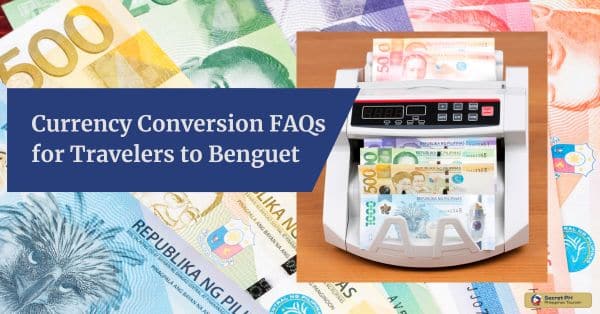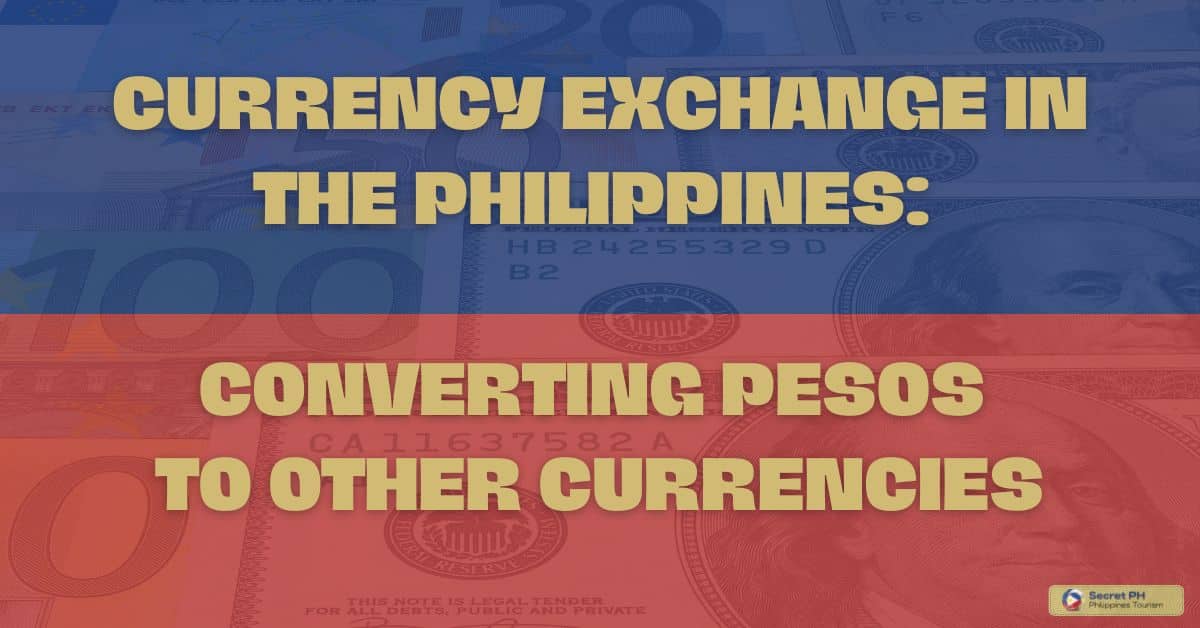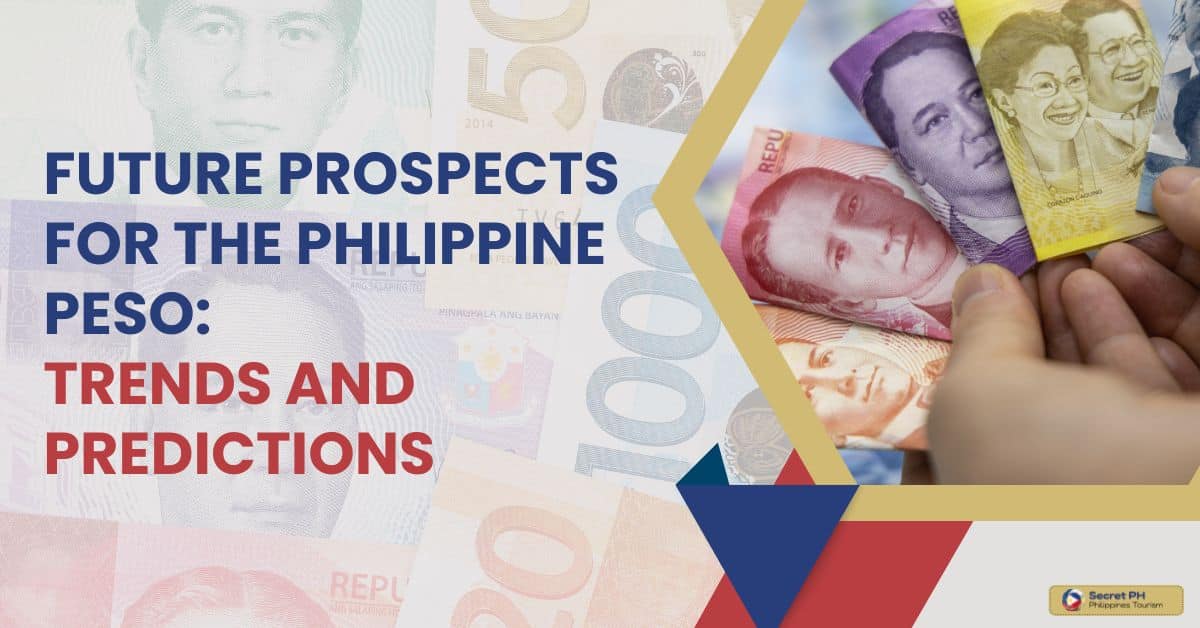Converting currency while traveling to the Philippines can be a daunting task. However, with the right tips, you can ensure a smooth and successful currency conversion experience. This article will provide expert advice on all aspects of currency conversion, including choosing a reliable exchange service, keeping an eye on exchange rates, and avoiding hidden fees.
We will also cover the use of credit cards, travelers checks, and prepaid cards as alternative options. In this article, we provide expert tips to ensure a successful and cost-effective currency conversion experience in the Philippines. From understanding exchange rates to alternative options, our tips will help you make informed decisions.

Importance of Currency Conversion in the Philippines
Currency conversion is an important aspect of international travel, and this is especially true in the Philippines. The Philippine peso (PHP) is the official currency of the country, and understanding its exchange rate against other major currencies is crucial in planning and budgeting for a trip. A proper currency conversion strategy can help travelers save money and maximize their travel budget, ensuring a more enjoyable and stress-free experience.
In addition to exchange rates, there are other factors that should be considered when converting currency in the Philippines. This includes choosing a reliable exchange service, knowing the fees involved in the conversion process, using credit cards wisely, and being aware of customs regulations regarding currency conversion.

Understanding the Philippine Currency
Understanding the Philippine currency is an important part of navigating the Filipino markets. The Philippine Peso was introduced in the year 1949, replacing the Spanish-Filipino Peso at par. The notes come in denominations of 20, 50, 100, 200, 500 and 1000 while coins are in denominations of 1, 5 and 10.
In addition to this basic currency unit; exchangeable coins and commemorative banknotes may also be available depending on the occasion or event. With a consistent rate of exchange both within the South East Asian region and most global currencies; traders get access to a wide range of investment opportunities with minimized risks.
History of Philippine currency
The history of Philippine currency can be traced back to the Spanish colonial period, when the Spanish peso was used as the official currency. After the country gained independence from Spain in 1898, the Philippine peso was introduced as the country’s official currency. The Philippine peso was pegged to the US dollar at a rate of 2:1, which lasted until the end of World War II.
In 1949, the Philippine peso was revalued and pegged to the US dollar at a rate of 3.2:1, and this exchange rate lasted until the 1970s. The devaluation of the US dollar in the 1970s led to a further devaluation of the Philippine peso, and the country experienced high inflation rates.
In the 1980s, the Philippine government introduced economic reforms aimed at stabilizing the economy and reducing inflation. This included the liberalization of foreign exchange controls, which allowed for a more flexible exchange rate system. In 1993, the Philippine government officially adopted a floating exchange rate system, which allowed the peso to fluctuate based on supply and demand.
Since the adoption of a floating exchange rate system, the Philippine peso has experienced fluctuations in value, with occasional periods of devaluation. However, the country’s economy has continued to grow, and the Philippine peso remains a stable currency in Southeast Asia.

Introduction to the Philippine peso (PHP)
The Philippine peso (PHP) is the official currency of the Philippines and is abbreviated as “₱”. It is widely accepted and used in all transactions within the country, including the purchase of goods and services, as well as for international transactions. The Philippine peso is divided into 100 centavos, and banknotes come in denominations of 20, 50, 100, 500, and 1,000 pesos, while coins come in denominations of 1, 5, 10, and 25 pesos.
The Philippine peso has a floating exchange rate and its value is determined by the supply and demand of the currency in the international market. This means that the exchange rate of the Philippine peso against other currencies can fluctuate over time. The Philippine Central Bank regularly monitors the exchange rate and intervenes in the market to maintain stability and prevent excessive fluctuations.
In terms of economic stability, the Philippine peso is considered to be a stable currency, and the country’s economy has been growing consistently over the past few decades. This has made the Philippine peso a popular currency for international transactions and investments, and it is widely accepted by merchants and financial institutions globally.

Current exchange rate of PHP against major currencies
The current exchange rate of the Philippine peso (PHP) against major currencies can fluctuate over time, and it is important to monitor these fluctuations to get the best value for your money. As of my training data cut off in 2021, the following are some of the current exchange rates of the PHP against major currencies:
| OTHER CURRENCIES | PHP |
| US dollar (USD) | 54.62 |
| Euro (EUR) | 59.29 |
| Japanese yen (JPY) | 0.42 |
| British pound (GBP) | 67.22 |
| Australian dollar (AUD) | 38.50 |
Note: Exchange rates can change due to economy, policies, market, and events. Stay informed for currency value changes.
Tips for Currency Conversion
Currency conversion can be a daunting task when traveling overseas, but it doesn’t have to be. With the right information and tips, you can quickly convert foreign currency into your local one and make sure that you won’t be overcharging or getting a bad deal. By understanding how currencies are traded on a global scale and learning the intricacies of exchanging money, you can maximize the value of your money while minimizing losses.
Choose a reliable exchange service
When it comes to currency conversion, it is important to do research before selecting a reliable exchange service. While comparing fees and rates, consider attention to customer service, security measures in place, and any additional difficulties or expenses related to exchanging large sums of money.
It is also smart to choose an online exchange service that provides up-to-date information on the latest market trends and news related to foreign exchange. Additionally, using a bank or debit card is the most hassle-free way of obtaining local currency when traveling abroad.

Keep an eye on the exchange rate
Currency conversion can be tricky but there are several easy tips to consider. Keep an eye on the exchange rate and watch for changes that could potentially benefit your wallet. Stay informed with local news of the countries you plan to visit and pay close attention to their current economic conditions from trusted sources.
Exchange smaller amounts of money at a time when possible; this ensures that if something happens, you will only lose a fraction of your funds instead of all of it. Additionally, research conversion rates for places such as banks, ATMs, and currency exchange offices before you begin exchanging your money. Doing this will ensure you receive the proper amount for each transaction.

Know the fees involved in the conversion
Know the fees involved in currency conversion as this could be a hidden cost you weren’t aware of. To save money, try to use an exchange service with low transfer fees. Additionally, it’s important to consider the current market rate and compare it when exchanging currencies as not all services will offer the same rate.
If you’re unsure if you’re getting a good rate, you can also look up historical rates on websites in order to make sure you don’t miss out on potential savings. Take advantage of any perks or benefits your bank or card providers may offer for foreign transactions such as cashback or reward points.

Consider using a multi-currency account
Consider using a multi-currency account to alleviate the burden of currency conversion when travelling abroad. This will save you time and money, as it allows you to make real-time payments faster and with more accuracy. A multi-currency account also eliminates costly exchange rate fluctuation risks.
When exchanging currencies, watch exchange rates and monitor trends to identify possible peaks or troughs in order to take advantage of good prices and maximize your savings. Consider purchasing currency online, where competitive rates are not impossible to find. Consider all your options before making any decisions, in order to ensure the best value for your money.

Use credit cards wisely
To ensure you get the best exchange rate, avoid using cash or exchanging money while overseas. Use credit cards that do not charge foreign transaction fees, as this will slash down on your expenses significantly. Additionally, always use trusted sites to convert currency and check multiple outlets before settling on an exchange rate.
Be sure to monitor the market closely as well and perform conversions exclusively when rates are favorable. Moreover, always read the terms and conditions for each card you use – some may even offer benefits like priority access to customer service lines or token rewards for purchases made abroad.

Consider other options such as travelers checks or prepaid cards
Converting currency can be tricky, especially when trying to find the best exchange rate. Consider other options such as travelers checks or prepaid cards to ensure you are maximizing your financial benefits in any country you visit. Research thoroughly before getting to the location so you know exactly which banks and money exchanges offer the most favorable rates.
Consider online services like Transfer Wise or PayPal for easy international transfers, and if possible try to use only cash during transactions in order to receive the highest value of your base currency. Finally, bring some local currency with you upon arriving at a new destination in order to cover an inflated price.

In Conclusion
All in all, executing a successful currency conversion within the Philippines is a straightforward process if you heed the expert advice. Arm yourself with knowledge by researching your exchange rate and fees, shop around to find the best deal, select convenient payment platforms and be aware of potential scams. By doing so, you can complete the transaction with confidence, knowing that you made a smart and informed decision.








